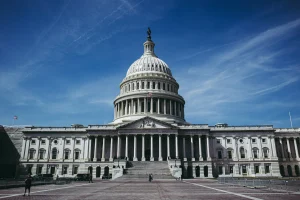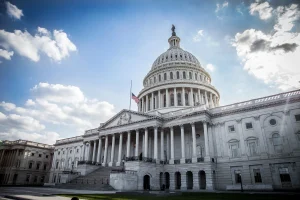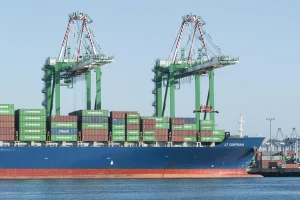Worried about unpredictable tariff shifts? Find out how leveraging advanced analytics can help you turn uncertainty into opportunity and safeguard your profits.
Tariff uncertainty remains one of the most significant challenges businesses face in international trade. As tariff policies and trade agreements evolve, the volatility of global trade can have substantial impacts on the bottom line. Unpredictable tariff changes create an environment where companies must continuously adapt to maintain their competitiveness. In this article, we explore seven effective strategies that businesses can implement to manage tariff uncertainty, minimize risk, and safeguard profitability. These strategies involve proactive approaches, ranging from supply chain diversification to financial hedging and regulatory compliance, offering businesses a comprehensive framework to thrive in a fluctuating trade landscape.
Given the dynamic nature of tariff regulations and international trade policies, businesses must stay vigilant and adaptive. The ability to swiftly respond to shifts in tariffs, whether on imports or exports, is crucial to mitigating their effects. Below, we dive deeper into each strategy, providing a roadmap for how companies can navigate the complexities of tariff uncertainty and ensure long-term success.
1. Diversify Your Supply Chain to Mitigate Risk Exposure
A key strategy to mitigate the risks of tariff uncertainty is diversifying your supply chain. Heavy reliance on one region or supplier exposes businesses to significant tariff risk and trade policy fluctuations. For instance, businesses sourcing goods from countries that are subject to high or rising tariffs may experience increasing costs as those tariffs climb. On the other hand, diversifying suppliers across countries with lower tariffs or favorable trade agreements—such as those in the USMCA, EU, or ASEAN—can significantly lower the impact of tariff hikes.
In addition to reducing tariff exposure, supply chain diversification makes a business more resilient against disruptions, whether due to tariffs, geopolitical events, or natural disasters. By spreading risk across multiple regions and suppliers, businesses are better equipped to adapt quickly when market conditions change, ensuring continuity in production and safeguarding profitability.
2. Leverage Free Trade Agreements (FTAs) to Reduce Tariff Burden
Free Trade Agreements (FTAs) offer valuable opportunities for businesses to lower costs and streamline their trade operations. Many countries have entered bilateral or multilateral FTAs, including the USMCA (United States-Mexico-Canada Agreement), the EU-Japan Economic Partnership Agreement, and the CPTPP (Comprehensive and Progressive Agreement for Trans-Pacific Partnership), all of which provide preferential tariff rates. By taking advantage of these agreements, businesses can substantially reduce tariffs on qualifying products, expanding access to larger markets while lowering costs.
However, utilizing FTAs effectively requires businesses to comply with specific rules of origin and other requirements. For example, products may need to be sourced or produced in one of the participating countries to qualify for reduced tariffs. This means that businesses must maintain precise documentation and track the origin of raw materials and components. By ensuring compliance with FTAs and seeking expert guidance, businesses can capitalize on these trade deals to reduce tariff exposure and boost their competitiveness.
3. Reevaluate Product Classifications to Lower Tariff Exposure
Tariff rates are often determined by the product classification in the Harmonized Tariff Schedule (HTS), and incorrect classification can lead to higher-than-necessary duty payments or potential penalties. A strategy for managing tariff uncertainty is to regularly review product classifications and ensure that they are accurate. Misclassification can result in overpaying duties, so businesses should actively monitor HTS to see if their products might be reclassified into a lower tariff category. For instance, a product originally classified as a finished good may be reclassified as a component, subject to a lower duty rate.
In addition to saving money, proper product classification helps businesses avoid audits, fines, and potential legal issues with customs authorities. Conducting periodic audits and consulting with trade professionals can help businesses avoid misclassifications and optimize tariff expenditures, reducing risk exposure and enhancing cost efficiency.
Success in global trade isn’t about predicting the future, but about being prepared to adapt to its uncertainties.
4. Hedge Against Tariff Fluctuations Using Financial Instruments
Hedging against tariff fluctuations can be a powerful way to manage costs when dealing with volatile raw material prices or high tariffs. Financial hedging instruments like futures contracts, options, and forward contracts allow businesses to lock in prices for raw materials or goods and mitigate the risks associated with tariff fluctuations. For example, a business importing steel could use a futures contract to secure a fixed price for steel, protecting against potential tariff-induced price hikes.
However, hedging requires expertise and careful planning. Working with financial advisors to develop a comprehensive hedging strategy aligned with the company’s risk tolerance and financial goals is crucial. While hedging can be an effective tool for stabilizing costs, businesses must stay informed of market conditions and actively manage their contracts to maximize the benefits of this strategy.
5. Adjust Pricing Strategies to Offset Tariff Costs
As tariffs rise, businesses may face squeezed margins, leading to the need for adjustments in pricing strategies. One option is to pass on the increased costs to consumers by raising prices. However, this approach requires careful market analysis to ensure that customers will not be alienated by higher costs. Alternatively, businesses may decide to absorb the additional costs by optimizing internal operations or improving supply chain efficiencies to offset the tariff burden.
Another approach to pricing involves segmenting the market and offering tiered pricing for different customer segments or launching premium versions of products that can bear higher costs. By understanding customer price sensitivity and market demand, businesses can fine-tune their pricing strategies to strike a balance between maintaining profitability and customer loyalty.
6. Monitor Tariff Changes and Stay Informed
Given the unpredictable nature of global trade policies, businesses must actively monitor tariff changes and stay informed about shifts in trade regulations. Tariffs can change rapidly, and staying updated on developments allows businesses to adjust quickly. Setting up automated systems for tariff tracking, subscribing to industry publications, or working with customs brokers can help businesses keep a pulse on the evolving regulatory landscape.
Additionally, broader geopolitical events and trade negotiations can have a significant impact on tariffs and trade agreements. Staying engaged with trade associations, participating in industry forums, and consulting with trade experts can provide valuable insights into policy changes that might affect your business. An informed approach helps businesses proactively adapt to regulatory changes, minimizing disruption and capitalizing on new opportunities.
7. Implement Technology Solutions for Tariff Management
Leveraging technology can significantly enhance your ability to manage tariff uncertainty. Modern software tools and platforms designed for supply chain management, customs compliance, and tariff tracking can automate much of the work involved in monitoring and adapting to tariff changes. These systems can provide real-time updates on tariff rates, alert you to potential risks, and even suggest cost-saving measures by optimizing your sourcing and supply chain decisions.
By embracing technology, businesses can minimize human error, boost operational efficiency, and make quicker, data-driven decisions. Advanced analytics can reveal trends in tariff fluctuations, enabling companies to anticipate changes and adjust proactively. Implementing digital solutions not only simplifies processes but also offers a competitive advantage in the rapidly evolving global trade landscape.
Tariff uncertainty is an unavoidable challenge in global trade. Consulting with trade experts, customs brokers, and tax professionals is crucial for managing tariff uncertainty. We could offer personalized advice on mitigating tariff risks, uncovering opportunities for cost savings, and staying compliant with trade regulations. If you need any support, please contact us.





